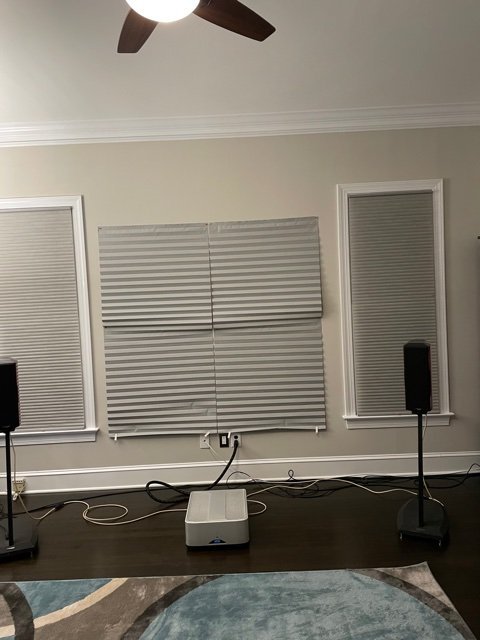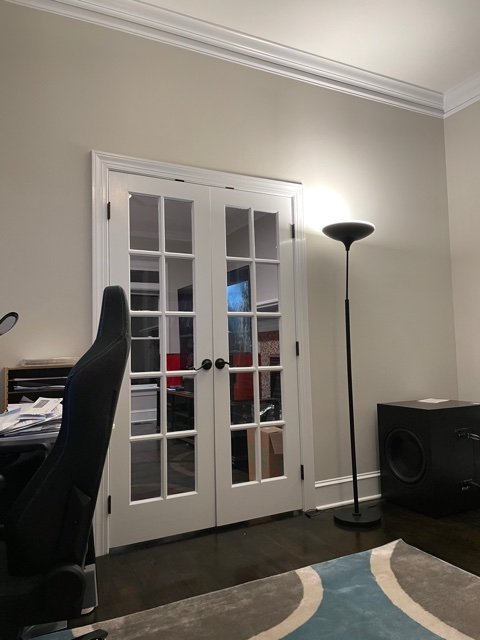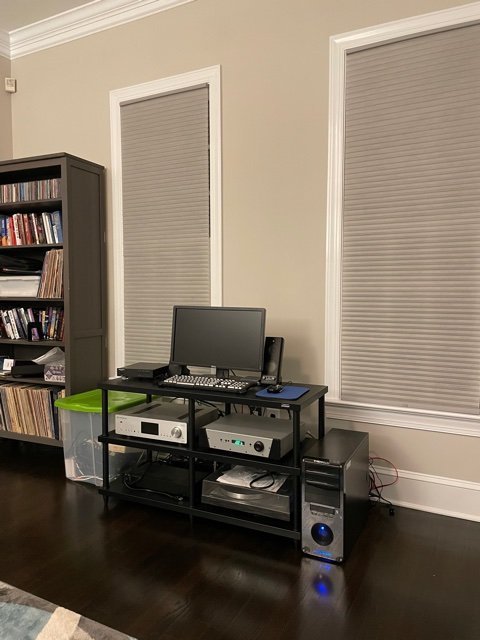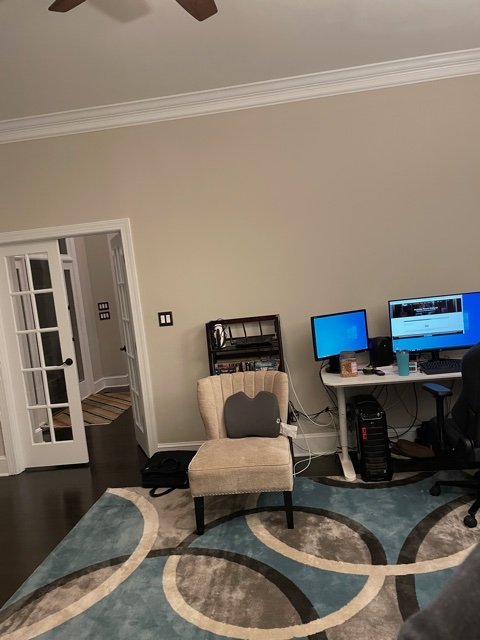So the attic idea was scratched and now I'm left with having the system in the office room of which the dimensions are 17' x 13'8" x 10'. I have a corner desk, bookcase, area rug chair and of course equipment rack.
First I tried placing the speakers on the 13'8" width wall and it sounded pretty awful. Lots of reverb the only bass was around a 3 foot parameter around the walls so basically nowhere in the seating area. Moving the system to the longer 17' wall and sitting my head about 2.5' from the backwall, it started sounding much better. However, there are some serious bass issues in the 40hz and 80hz-200hz range. Vocals still have too much reverb/RT and some searing high frequency nodes too.
I understand the room needs more diffusion/diffraction but one problem I'm not sure how to solve are the 4 windows and 2 glass French doors. Unfortunately 2 of them are directly behind where the speakers sit, 2 of them on the right side wall. One French glass door is on the left side wall and the other is on the rear wall opposite of the right speaker. Sure, I can place more bookshelves in the room and even add diffusion/diffraction panels on the walls but how do I solve the glass directly behind and to the side of the speakers? Heavy curtains?
Took some measurements and it's not looking great. As always any input is appreciated.
First I tried placing the speakers on the 13'8" width wall and it sounded pretty awful. Lots of reverb the only bass was around a 3 foot parameter around the walls so basically nowhere in the seating area. Moving the system to the longer 17' wall and sitting my head about 2.5' from the backwall, it started sounding much better. However, there are some serious bass issues in the 40hz and 80hz-200hz range. Vocals still have too much reverb/RT and some searing high frequency nodes too.
I understand the room needs more diffusion/diffraction but one problem I'm not sure how to solve are the 4 windows and 2 glass French doors. Unfortunately 2 of them are directly behind where the speakers sit, 2 of them on the right side wall. One French glass door is on the left side wall and the other is on the rear wall opposite of the right speaker. Sure, I can place more bookshelves in the room and even add diffusion/diffraction panels on the walls but how do I solve the glass directly behind and to the side of the speakers? Heavy curtains?
Took some measurements and it's not looking great. As always any input is appreciated.






![ALL SPL[25703].jpg](/data/attachments/63/63485-52514b48f7576a083324c617724bc59b.jpg)
![Decay[25701].jpg](/data/attachments/63/63486-e8cae33cb80462da4ccd93bcd1b22c9c.jpg)
![RT60[25707].jpg](/data/attachments/63/63487-40667a80bf323c0ca8f505de44b51cbf.jpg)
![Waterfall[25710].jpg](/data/attachments/63/63488-d92b35063e34d0e9e331894a54ce5455.jpg)

